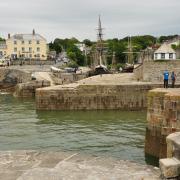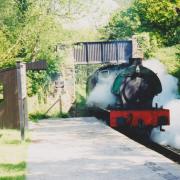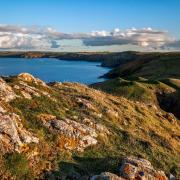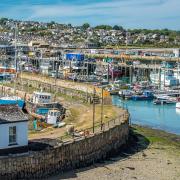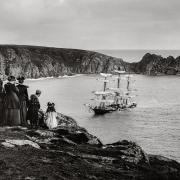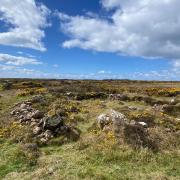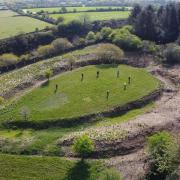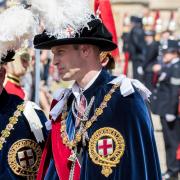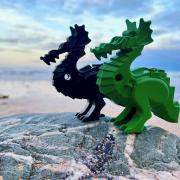Often standing alone, way out to sea or built into dramatic cliffside locations, these iconic features of the Cornish coastline have been shining a light for seafarers since 1619.
David Chapman takes us on a photographic tour of the county's lighthouses.
In 1514 Henry VIII granted a Royal Charter to Trinity House which was to regulate the pilotage of ships using the River Thames. In 1566 Elizabeth I granted the same organisation the right to build lighthouses and its first was at Lowestoft in 1609. Possibly its most famous Master was Samuel Pepys, who took charge in 1676. Its remit expanded through the years with a general aim to improve the lot of mariners including the provision of almshouses for retired seamen.
Before its formation a number of random lighthouses had sprung up around the country, mostly built by local philanthropists, but in 1836 Trinity House was given the power to acquire and maintain all privately built lighthouses around the country and that brought a degree of standardisation across British lighthouses.
The story of Trinity House in Cornwall began in 1680 when it built St Agnes lighthouse, soon followed by its first rock-based lighthouse on Eddystone Rocks in 1698, and that’s where I will begin my lighthouse exploration, before moving clockwise around the Cornish coast and finally over to the Isles of Scilly.

1. Eddystone Lighthouse
Eddystone Rocks have seen four different lighthouses. The first, built between 1696 and 1698, was washed away together with its architect and five workers in a storm in 1703 and the second, completed in 1709, burned down in 1755. Unperturbed by the bad luck, a third was built by John Smeaton using a clever system of interlocking granite blocks. It was completed in 1759 and stood the test of time until a close inspection in the 1870s revealed cracks in the rocks on which it stood. The majority of the lighthouse was dismantled and rebuilt as a monument to Smeaton on The Hoe in Plymouth. Meanwhile another lighthouse, 49 metres tall, was built on an adjacent rock in 1877 and that lighthouse, which was the first to be automated (in 1982), still stands today.

2. St Anthony Lighthouse
From Eddystone the next lighthouse is at St Anthony Head. Built in 1835 this stands at the eastern side of the entrance to The Carrick Roads. Its history lacks the drama of many other Cornish lighthouses but it will be one of the most familiar to people of a certain age because it was the lighthouse used in the opening scenes of the children’s television programme, Fraggle Rock, popular in the 1980s. The lighthouse now has a self-catering cottage with wonderful views, accessed down a 300-metre-long path.

3. Lizard Light
Lizard Light is situated at the most southerly point of Britain making it an inspiring place to visit. There was a precursor to the current lighthouse built by Sir John Killigrew, in 1619, but without being able to secure funds for its upkeep this fell into disrepair and was replaced by the current structure in 1752. It is unusual because it has twin towers and between these towers is a cottage where the supervisor would sit and check that the coal-fired lamps were being stoked sufficiently by the workers.

Updates have included the addition of more cottages to house the increasing number of workers and these are now self-catering cottages. The engine room houses a flagship Trinity House visitor centre with a variety of interactive displays where it is possible to have a tour of the lighthouse, the only lighthouse visitor centre in the county.

4. Tater Du Lighthouse
Tater Du Lighthouse, situated between Lamorna and St Loy, on the south coast of West Penwith, is our most modern lighthouse, built in 1965 in response to the loss of the Spanish coaster, Juan Ferrer in 1963. It is a simple design and was built to be fully automated.

5. Wolf Rock Lighthouse
Wolf Rock is situated eight miles southwest of Land’s End and 21 miles east of St Mary’s. It is a single rock outcrop which is said to howl in the wind, hence its name. Clearly this rock is a danger to shipping and there was an intention to build a lighthouse here as far back as 1791 but the task seemed so ridiculously difficult that a simpler iron mast was erected instead. This didn’t last and in the 1830s a cone-shaped iron beacon was installed as a daymark.
In 1861 work commenced on a lighthouse, along the same lines as the Eddystone Light, designed by John Smeaton, though as well as the blocks having interlocking joints on each level the subsequent levels were also interlocked with each other. This was completed in 1869, to a height of 41 metres, and the lighthouse remains to this day, in fact in 1972 it was the first lighthouse in the world to have a helicopter landing deck constructed on its top.

6. Longships Lighthouse
Longships is one of the most familiar of all Cornish lighthouses because it is offshore from Land’s End. This part of our coastline has experienced a huge number of shipwrecks and it is said that some local people actively encouraged ships to run aground so they could benefit from their cargo.

The first lighthouse built on Longships was in 1795. It held a light at about 24 metres above sea level but it was often obscured by rough seas, so in 1869 Trinity House began building a replacement along the same lines as Wolf Rock but 35 metres tall.

Let me share one of my favourite optical illusions. When driving down towards the Land’s End complex Longships Lighthouse looks quite close to the shore, but when you get to the cliff tops it looks much further away. If you don’t believe me, try it out!

7. Pendeen Watch
Pendeen Watch is a relative newcomer to the Cornish lighthouse scene, being opened in the year 1900, in response to the number of ships being lost as they rounded the northwest tip of the West Penwith peninsula. It is the position of this lighthouse that makes it one of our most dramatic mainland-based lighthouses.

8. Godrevy Lighthouse
Possibly the most photographed of our lighthouses, Godrevy is situated at the eastern side of St Ives Bay and is visible from much of the north coast. The rocks on which it stands were notorious in the 19th century with many shipwrecks including the SS Nile (all 40 lives were lost) in 1854 and this was the spark that Trinity House needed to build a lighthouse here.

Building began in early 1858 and the 26-metre-high tower was first illuminated in March 1859. It might seem that this would be a straightforward place to build but that was not always the case, at one point the workforce was marooned on Godrevy island for a fortnight in bad weather.
The National Trust acquired the site around Godrevy Head in the 1930s; at that time it was common for visitors to be rowed out to the light to visit the keepers in summer. Virginia Woolf holidayed in the area so it is thought that this is how she got the idea of a family rowing to a lighthouse in her novel, To The Lighthouse.

9. Trevose Head Lighthouse
Trevose Head is one of the most distinctive landmarks in Cornwall, being visible from the coastal footpath as far west as St Ives, on a clear day. Trevose Head Lighthouse was built in 1847 at a time when there was only one other light on the way from here up the Bristol Channel, on Lundy. At the time it was built with a main light on the 27-metre-high tower and a lower light to its seaward side but the lower light was disused in 1882. The keepers’ cottages are now available for self-catering holidays.

Lighthouses on the Isles of Scilly

1. St Agnes Lighthouse
The second lighthouse built in Cornwall (beaten only by Lizard Light in 1619), the oldest on the Isles of Scilly and only the second lighthouse to be built by Trinity House in the whole of the UK (after Lowestoft in 1609), St Agnes lighthouse was constructed in 1680. The lighthouse was decommissioned in 1911 being superseded by the lighthouses at Bishop Rock and Peninnis, on St Mary’s, though the 22-metre-high tower situated on a high point of St Agnes still acts as a distinctive daymark.

2. Bishop Rock Lighthouse
One of our most dramatic lighthouses, some 49 metres tall and sited on the most remote rocks at the very western edge of the Isles of Scilly.
The first version of a lighthouse here was attempted in 1847 built using cast iron legs sunk into the granite, a little like the legs of a pier. But before the light was turned on for the first time the structure was washed away in a storm in 1850.

The second version, constructed from solid granite to a height of 35 metres, took seven years to build and was completed in 1858. Given the remote conditions this was no mean feat and involved teams of men living on a nearby, previously uninhabitable islet!
In the late 19th century weaknesses were found in its structure so in 1887 the lighthouse was strengthened and made taller, essentially by encasing the old lighthouse in a new one with a particular emphasis on enlarging the base to protect it from the waves.

3. Round Island Lighthouse
Round Island Lighthouse was also built in 1887; the logistics of the build ought to have been much simpler but the sheer cliffs of the island made it difficult to get the granite blocks onto site. This is quite a small lighthouse, standing only 19 metres high, but standing on this steep-sided island makes it visible from a great distance.

Peninnis Lighthouse
It seems a great shame that such a beautiful lighthouse as that on St Agnes might be superseded by a small black and white metal tower, but that’s progress for you. Having said that, Peninnis Lighthouse is quite striking because it is built on one of the most rugged headlands in Britain. It sits amongst wonderful granite boulders sculpted by wind, rain and sea spray, further decorated by a flurry of flowers in spring and summer.

Want more from Cornwall Life?
Check out:
- Platinum Jubilee: the Queen in Cornwall
- Archaeologists reveal stunning find at ancient Cornish monument
- Discover the amazing history of Cornwall's churches
You can also subscribe to Cornwall Life Magazine for more amazing and exclusive content here, or sign up for our newsletter here.




